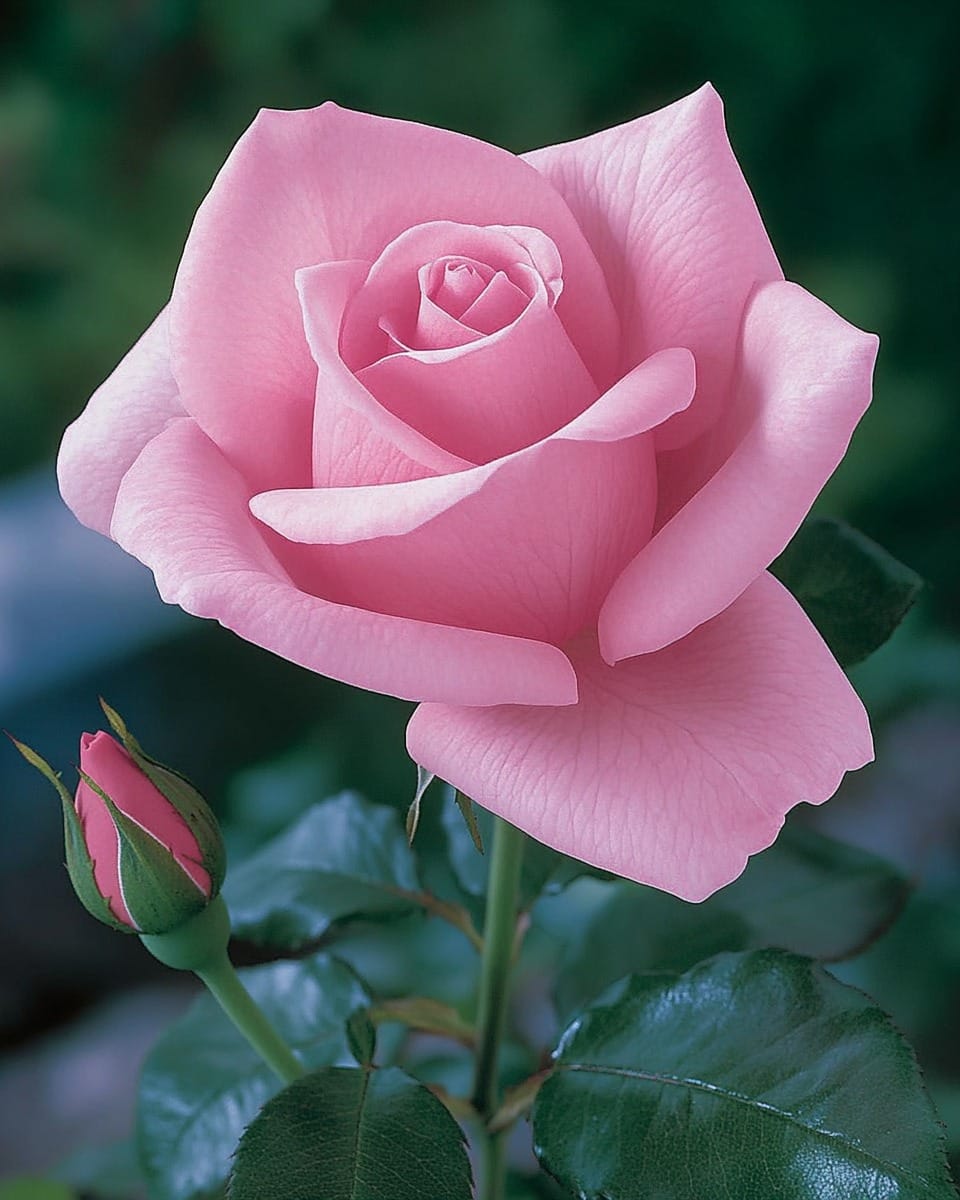The Queen Elizabeth Rose (Rosa ‘Queen Elizabeth’) is a timeless and beloved variety, renowned for its classic pink blooms and delicate fragrance. Often considered a symbol of grace and elegance, this rose is a staple in formal gardens and is ideal for those looking to add a touch of beauty and refinement to their outdoor spaces. Additionally, its stunning blooms make it perfect for creating cut flower arrangements, bringing charm and sophistication to both indoor and outdoor settings.
Light Requirements:
The Queen Elizabeth Rose thrives in full sun, requiring at least 6 hours of direct sunlight per day to produce its abundant, vibrant blooms. Full sun ensures that the plant remains healthy and produces strong, sturdy stems capable of supporting its large flowers. The more sunlight it receives, the better the flowering potential, leading to robust, long-lasting blooms throughout the growing season. Be mindful that while it needs full sunlight, some protection from the harsh afternoon sun in especially hot climates can help keep the rose from scorching.
Watering Needs:
To keep the Queen Elizabeth Rose flourishing, it’s important to water it deeply and consistently. This helps maintain consistent soil moisture, preventing stress on the plant. Be sure to water thoroughly at the base of the plant, avoiding wetting the foliage to reduce the risk of fungal diseases. During the growing season, aim to water deeply at least once a week, or more frequently during hot or dry spells. Ensure that the soil is kept moist but not soggy, as roses prefer well-drained soil to prevent root rot. It’s advisable to water in the morning to allow the plant to dry off before the cooler evening hours.
Soil Preferences:
The Queen Elizabeth Rose thrives in well-draining, fertile soil. This variety of rose prefers soil that is slightly acidic to neutral, with a pH level ranging from 6.0 to 7.0. It’s essential to plant the rose in soil that drains well to prevent waterlogging, which can damage the roots and lead to diseases. For best results, amend the soil with organic matter such as compost to enrich it with nutrients. Additionally, if the soil in your garden is heavy or clay-like, consider planting the rose in a raised bed or amend the soil with sand or perlite to improve drainage.
Temperature Tolerance:
The Queen Elizabeth Rose is best suited to mild to warm climates. This rose variety is relatively hardy and can tolerate a range of temperatures, but it thrives in regions with temperate climates where winters are not too harsh, and summers are warm but not scorching. It performs well in areas where the temperature stays between 60°F to 75°F (16°C to 24°C), and it can tolerate light frost, although severe cold temperatures can damage the plant. If you live in a particularly cold area, consider providing some winter protection by mulching around the base of the plant or bringing potted roses indoors during the winter months.
Fertilization:
To ensure optimal growth and blooming, apply a rose-specific fertilizer to the Queen Elizabeth Rose every 4-6 weeks during the growing season. This will provide the necessary nutrients for strong stems, lush foliage, and vibrant blooms. Roses benefit from a balanced fertilizer with an equal ratio of nitrogen, phosphorus, and potassium, but you may also use one specifically formulated for roses, which often contains added micronutrients that promote healthy root development and bloom production. Be sure to follow the manufacturer’s instructions for fertilization to avoid overfeeding, which can cause excessive leaf growth at the expense of blooms.
Planting Tips:
When planting the Queen Elizabeth Rose, choose a location that receives full sun and has well-draining, fertile soil. The planting hole should be at least 18 inches deep and wide, allowing ample space for the roots to grow and spread. Plant the rose with the bud union (the swollen area where the roots meet the stem) about 2 inches above the soil line to prevent rot. After planting, water the rose thoroughly and mulch around the base to retain moisture and suppress weeds. Regularly check the plant for signs of disease or pests, and trim away any dead or damaged branches to encourage healthy growth.
Design Tips:
The Queen Elizabeth Rose is perfect for formal gardens, where its elegant blooms can be admired in structured, symmetrical settings. This rose can also be used in mixed borders, alongside other plants with contrasting textures and colors. Its pink flowers work beautifully when paired with other roses, such as white or red varieties, to create a stunning multi-colored rose display. If you’re looking to make a statement, plant the Queen Elizabeth Rose in a prominent location as a focal point or in containers where its graceful presence can be appreciated up close. The rose’s lovely pink flowers also make it an excellent choice for cut flower arrangements, where they can brighten any room and add a touch of romance.
Conclusion:
The Queen Elizabeth Rose is a timeless and elegant addition to any garden. With its classic pink blooms and delicate fragrance, it brings a sense of grace and beauty to formal garden settings and flower beds. Easy to care for, this rose variety thrives in full sun, well-draining soil, and a consistent watering schedule. By using a rose-specific fertilizer and ensuring the plant receives the right amount of care, you’ll enjoy its stunning blooms throughout the growing season. Whether planted in formal gardens, flower borders, or as a cut flower, the Queen Elizabeth Rose is sure to remain a beloved favorite in your garden.
More Recipes You Might Like
-
Texas Toast Sloppy Joes: The Crunchy, Cheesy Upgrade You Didn’t Know You Needed
There’s something timeless about sloppy joes. For generations, this saucy, savory, and slightly sweet ground beef sandwich has been a go-to comfort food in American kitchens. It’s quick, filling, and family-friendly—perfect for busy weeknights. But what if we told you there’s a way to take this classic dish up a notch? Enter the Texas Toast…
-
Classic Pig Pickin’ Cake
When it comes to Southern desserts, few sweets shine as brightly as the Classic Pig Pickin’ Cake. This nostalgic cake, sometimes called a “Mandarin Orange Cake,” has roots deep in Southern tradition. It gets its playful name from its frequent appearance at pig pickin’s—Southern-style barbecue gatherings where communities come together to enjoy slow-cooked pork, sides,…
-
Lemon Garlic Butter Chicken with Creamy Parmesan Pasta
There’s something irresistible about the combination of tender, golden-browned chicken paired with a creamy pasta coated in Parmesan cheese. Add the brightness of lemon, the depth of garlic, and the richness of butter, and you have a recipe that feels indulgent yet approachable enough for a weeknight dinner. Lemon Garlic Butter Chicken with Creamy Parmesan…



